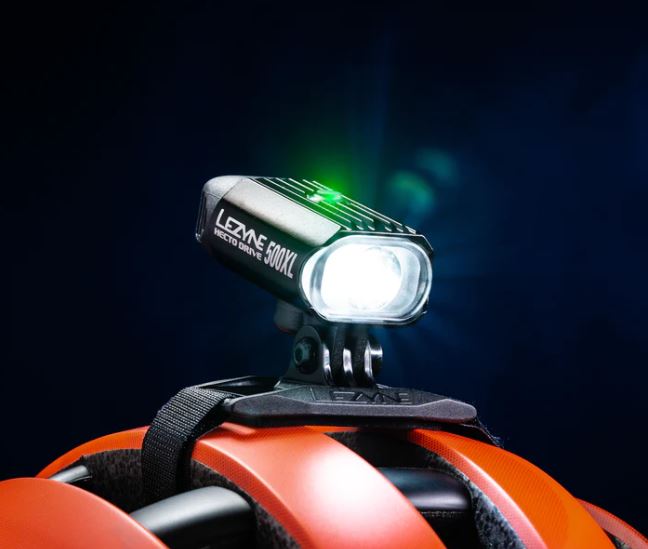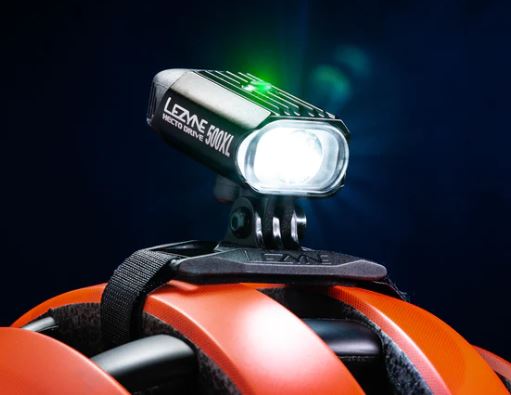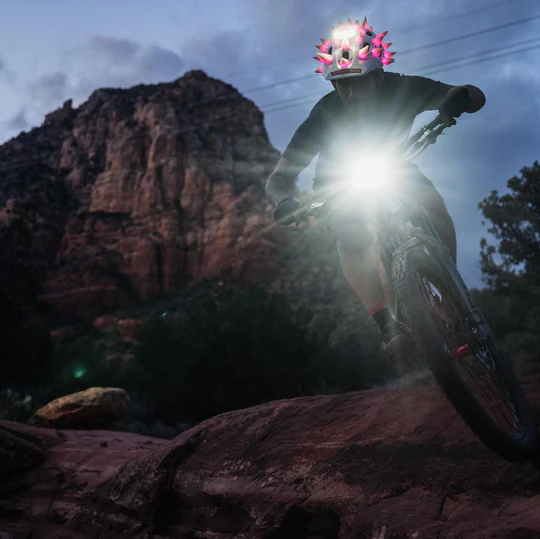Road Bike Lights Buyers Guide

Choosing the right lights for your road bike is a critical decision for any cyclist. Adequate lighting is essential not only for seeing where you’re going but also for being visible to others when you’re on the road. This Road Bike Lights Buyers Guide will help you navigate the myriad of options available and select the best lighting for your road biking needs.
Click here to find the Best Road Bike Lights Rated and Ranked
Understanding Road Conditions and Visibility Needs
Road cycling often involves sharing the road with vehicles, which means that visibility is paramount. Unlike mountain biking, road bike lights are primarily designed to make you seen, although being able to see the road is also important, especially for those predawn or post-dusk rides.
Light Brightness and Beam Quality
Lumens are the measure of how much light is emitted by a source and is a handy guide for brightness. For road biking, anywhere from 50 to 300 lumens can be sufficient for the rear light, while front lights typically range from 300 to 600 lumens for well-lit urban areas. If you’re riding on unlit roads, you may need 600 lumens or more.
A good quality beam is essential. For road use, a light with a focused beam that directs light to where it is needed on the road is beneficial, preventing blinding oncoming traffic.
Battery Life and Charging
For regular commuters, a USB-rechargeable light can be easily charged at the office. LED lights are popular due to their efficient power consumption, offering longer battery life.
Mounting Systems
Look for a light that offers a secure mounting system that’s also easy to attach and detach, as you may need to remove the lights when locking up your bike in public places. Most lights come with brackets that can be left on the bike, and the light itself clips in and out.
Durability and Weather Resistance
Durability is important, as road lights can suffer from the occasional drop or bump. Weather resistance is another key factor – your lights should at least be water-resistant if not fully waterproof, especially if you’ll be riding in various weather conditions.
Size, Weight, and Aerodynamics
Road cyclists often consider the weight and aerodynamics of all equipment. Lights should be compact and lightweight enough not to affect your bike’s performance.
Light Modes and Smart Features
Multiple light modes (steady, flashing, pulse) are important for different times of day and visibility conditions. Some lights come with smart features like auto-brightness adjustment based on ambient light or the ability to pair with a cycle computer.
Side Visibility
Especially in urban environments, side visibility can be crucial. Some lights have side windows or additional LEDs designed to be seen from multiple angles.
Price Point and Brand Reliability
Finally, consider the price and the reputation of the brand. A reliable set of lights might cost more initially but will likely offer better longevity and performance. Check for warranty periods and after-sales support.
In conclusion, the best road bike lights will balance brightness with battery life, be durable and weather-resistant, and provide the necessary visibility for your specific cycling conditions. Make sure they’re convenient to charge and use, and appropriate for the level of traffic you’ll be navigating. Safety is an investment, so choose lights that will reliably illuminate your way and signal your presence to others on the road.
List of Road Bike Lighting Manufacturers
Lezyne
- Known For: High-quality, durable lights with excellent battery life.
- Product Highlights: Lezyne offers a range of lights that feature strong LED outputs and innovative mounting systems.
Garmin
- Known For: Smart lights that can integrate with GPS and cycling computers for features like automatic brightness adjustment.
- Product Highlights: Garmin Varia radar taillights that detect approaching vehicles and adjust brightness accordingly.
NiteRider
- Known For: Rugged and reliable lights that are favored by mountain and gravel bikers alike.
- Product Highlights: High-intensity lights with secure mounts, ideal for challenging gravel paths.
Cateye
- Known For: Their compact designs and user-friendly interfaces.
- Product Highlights: A wide range of both front and rear lights that cater to casual and serious cyclists.
Bontrager
- Known For: Producing lights with consistent lighting and robust build quality.
- Product Highlights: The Bontrager Ion series for front lights and Flare series for rear lights offer a good balance of visibility and run time.
Knog
- Known For: Stylish, innovative light designs with easy-to-use attachment mechanisms.
- Product Highlights: Knog’s lights often feature a distinctive design and are USB rechargeable, suitable for a variety of biking activities.
Cygolite
- Known For: Their focus on brightness and longevity.
- Product Highlights: Cygolite offers some of the most powerful lights on the market, designed for riders who need maximum visibility on dark trails.
Lupine
- Known For: Premium lights with exceptional brightness and quality.
- Product Highlights: Lupine’s lighting systems are known for their durability and high-performance, suitable for extreme gravel riding conditions.
Exposure Lights
- Known For: British-manufactured lights that offer sophisticated technology and sleek designs.
- Product Highlights: Exposure provides high-end lights that are both powerful and lightweight, with a focus on advanced features like programmable settings.
Magicshine
- Known For: Offering a balance between affordability and functionality.
- Product Highlights: Magicshine provides a range of bike lights that are cost-effective without sacrificing performance.
When choosing a manufacturer, consider warranty options, customer service, and user reviews. It’s also important to think about compatibility with your bike and your specific riding needs. Some brands might cater more to casual riders while others are aimed at high-performance athletes, so aligning the brand’s product offerings with your expectations is crucial for making the best purchase. Stay safe out there! John
FAQ’s
How many lumens should a road bike light be?
The appropriate lumens for a road bike light can vary based on the time of day you’re riding, the conditions (urban vs. rural), and whether the light is to see or to be seen by others.
For front lights on a road bike:
- To be seen in daylight or twilight: 100-200 lumens are often sufficient.
- Urban riding at night where streets are well-lit: 200-600 lumens may be enough to make you visible and to light up darker spots of the road.
- Rural or unlit roads: 600-1000 lumens or more can be necessary to adequately illuminate the road ahead for safe riding.
For rear lights:
- Daytime visibility: 50-100 lumens can be enough since the main purpose is to be seen.
- Nighttime visibility: 10-50 lumens are typically adequate; rear lights don’t need to be as bright because they are for visibility to others, not for illuminating the road.
Remember, more lumens usually mean higher battery consumption. Also, many road bike lights offer varying settings, including a flashing mode, which can enhance visibility during the day even with fewer lumens. It’s also important to consider the beam pattern and how the light distributes the lumens. A light with a good lens can focus the beam exactly where you need it, improving visibility without necessarily having a higher lumen count.
Is 1000 lumens enough for a road bike bike light?
Yes, 1000 lumens is typically more than enough for a road bike light, especially for front lighting. With 1000 lumens, you will be well-equipped to illuminate the road on unlit rural routes and in most night riding conditions. This level of brightness can help you to spot potential hazards in the road ahead and make you highly visible to other road users.
However, while 1000 lumens is sufficient for visibility, it’s important to use this amount of light judiciously:
- On well-lit roads: In urban areas where there’s plenty of ambient light, 1000 lumens may be more than necessary and could potentially dazzle other road users, especially if the light is not directed properly. It’s respectful and safer to use a lower brightness setting or a light with an appropriate beam pattern that focuses the light down onto the road.
- Battery Life: Higher lumen outputs typically drain battery life more quickly, so consider if the light provides enough run time for your needs at its highest setting. Lights with adjustable settings can offer more versatility and longer battery life by switching to lower settings when appropriate.
- Beam Pattern: Look for a light that offers not just high lumens but also a beam pattern that’s suitable for road cycling, ensuring that the light is cast forward and downward to avoid blinding oncoming traffic.
In summary, a 1000-lumen light can be a great choice for a road bike, but it’s often not necessary to use the full brightness in every situation. Adjustable settings and careful use can make such a light versatile for both day and night cycling, across various environments.





